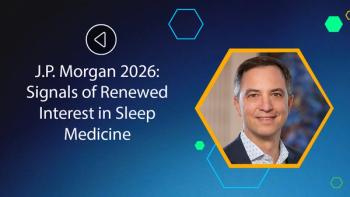
England's Cancer Drug Fund: An Acid Test for Value Based Pricing
England’s Cancer Drugs Fund (CDF) could be in its final financial year, after running in full since April 2011. The fund covers the cost of cancer treatments either when NICE has said ‘no’, or hasn’t yet come to a view.
England’s Cancer Drugs Fund (CDF) could be in its final financial year, after running in full since April 2011. The fund covers the cost of cancer treatments either when NICE has said ‘no’, or hasn’t yet come to a view. Companies can’t circumvent NICE though; if a company was invited to submit to NICE and refused, it’ll be refused CDF funding for its product too. The CDF is supposed to be a ‘bridge’ to Value-Based Pricing (VBP), due to be implemented in January 2014.
Why was a fund needed?
The Fund was driven by a heady mix of a desire by the Conservatives to grab votes in the last General Election in 2010, strong political lobbying and perceived weaknesses in how England makes it’s decisions on which products to recommend for use. The latter really means that many expensive but potentially beneficial products were simply not being recommended by NICE.
Stats illustrate this with NICE saying no in more than a third of recommendations in 87 technology appraisals of cancer medicines since the year 2000. But that also hides the distinction between ‘recommended’ and ‘optimized’; where optimized means restricted to use in specified circumstances, so not all of the remaining two thirds are recommended to all patients. Such stats are important; so too are the processes that lead to recommendations being made. The concerns are many, but for cancer centre on:
• Whether tools like the EQ 5D actually pick up on what matters for those with cancer
• How people in real life trade quality and length of life versus how economic models assume they do
• Whose values count, patients, or the public or even some combination
What did the fund buy?
Up to December 2011 the fund made around 10,000 treatments available to patients, covering 34 products. Commentators now suggest that it’s now over 28,000 patients who have benefitted.
Too much £?
The Fund is small though, starting with £50 million and now £200million a year. It amounts to very little when compared with the £5.1 billion spend on cancer by the NHS in 2010/11. Worryingly though, there are reports that not all the money was actually spent last year. It’s not clear if that’s because there isn’t unmet need or if everyone was just overly cautious and didn’t want to bust the budget.
Move to a national approach
Change is abound in the English NHS as a result of the Health and Social Act (2012) and the CDF has not escaped reform either. The fund is now the responsibility of NHS England, the new national agency tasked with spending some £20billion and overseeing the Clinical Commissioning Groups who will spend the rest of the over £100billion NHS budget. There’s a single approach to making decisions, and there’s a single list of products that will be funded. That’s quite a change from the regional approach taken up to now, with 10 funds previously in operation across England. That may be good for some; it’s less likely that there will be a different view depending on where a patient lives. That may also be bad for others; if a companies drug doesn’t get on the national list, it has no hope to get on a list anywhere else.
And the list is more restrictive now; 28 products versus the 34 reported available under the regional approach. There is some scope for variation from the list though, with clinicians able to ask for funding for treatments for individuals with rare cancers. Decisions on whether or not to fund these will rest with 4 panels spread across England, but they’ll have to use the same process.
Will VBP fix the problems that led to the fund in the first place?
The answer at the moment is that no-one really knows. The details of VBP are not yet known, and maybe not even worked out. The uncertainty that this creates is leading to widespread concerns, and headlines and concerning stats like:
Cancer Drugs Fund: Patients to Lose Out….6,427 patients every year could be denied access to the medicines
Drugs fund axe ‘will hit 16,000 cancer patients’ as experts claim access to medication will be worst in Europe
One thing is for certain though; the success or otherwise of VBP will be measured in access to cancer medicines.
Leela Barham is an economic consultant. She can be contacted via her
Newsletter
Lead with insight with the Pharmaceutical Executive newsletter, featuring strategic analysis, leadership trends, and market intelligence for biopharma decision-makers.




